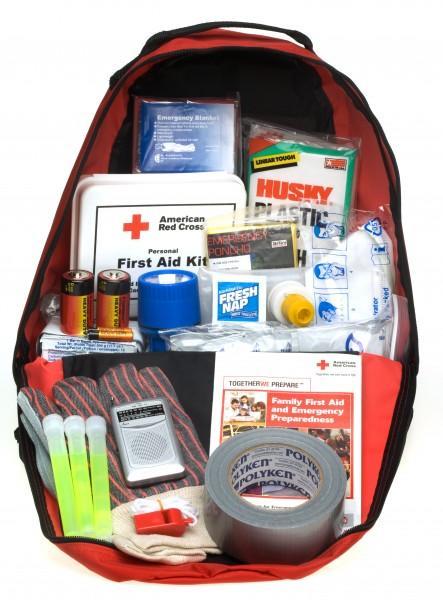
A summer of backpacking across Eastern and Western Europe. Six months hopping from beaches to mountains to jungles in the heart of Southeast Asia. An entire year, or more, of seeing every country you can, until the budget runs out. Extended travel means different things to different people, but there is one constant – the long-term traveler must be prepared. A good toiletry bag is essential to health and happiness during your adventure. Fill it wisely.
Everyday Necessities
Good health on the road means being prepared for the worst, as well as the day-to-day. Inexpensive items like band-aids and antibacterial cream don’t take up much room, but they can keep a mildly irritating scratch from becoming a seriously infected wound. Likewise, having Tylenol or another over-the-counter painkiller means that if a headache or slight fever arises, you don’t have to rush out and navigate a new city just to find the nearest pharmacy.
To keep long-term travel healthy and in high spirits, you’ll also want a supply of sunscreen and bug spray. Besides making your trip extremely uncomfortable (if you thought that 14-hour bus ride through Laos was torture, now imagine it with an itchy back), mosquito bites can spread disease – so best to stop them before they occur. If your travel will take you through Southeast Asia, Africa or South America, use a bug spray with DEET concentration of 50 percent or less, being sure not to apply the repellent to broken skin. As for sunscreen, bring a small bottle from home and buy more when you get to the beach. Sunburn increases the risk of skin cancer, and it’s not a very attractive look when meeting new friends abroad.
Women should pack a supply of their preferred menstrual product, keeping in mind that although pads are easily obtained in most parts of the world, tampons may be more difficult to find. Some women prefer to use a reusable menstrual cup – such as the Diva Cup or Mooncup – while on the road, as it is easier to pack and needs to be changed less often.
Preexisting Conditions
If you’ve got a chronic health condition such as diabetes or high blood pressure, make an appointment with your doctor well before the travel kick-off date and ask for a long-term supply of insulin, hypertension drugs, or whatever prescription medication you need. Take the doctor’s written prescription as well so that if your medication is lost or stolen, a new physician or pharmacist can refill it.
Long-term travelers with serious allergies must pack their epinephrine auto-injector, if it’s been prescribed by a doctor.
On the Road
Eating a new diet every week will no doubt affect your gastro-intestinal system. Be prepared with both an anti-diarrhea medicine such as Imodium, and a mild laxative. A simple antacid such as TUMS will also calm nervous stomachs not accustomed to spicy food or huge varieties of cuisine.
Because long-term travel will likely include adventures on land, sea and air, it’s a good idea to pack a few motion sickness pills. Even if you’ve never experienced kinetosis, sailing a three-day gullet in Turkey or navigating mountainous roads in South America will give you feelings you never knew you had – both good, and bad. Speaking of which, consider bringing a mild sleeping pill too, to get through cramped night transport as well as noisy hostel rooms.
Preparing for the Worst
Often, an extended travel plan includes a few forays into relatively uncharted territory: jungle treks, alpine climbs or near-deserted beaches. Because rural areas are more prone to malaria, some travelers will take an antimalarial medication prior to visiting those spots. These drugs are generally NOT recommended for travelers, as antimalarials can cause a number or side effects. However, the World Health Organization lists a number of countries or areas within countries where the risk of malaria is great enough to warrant preventative medication: Angola for example, the southern belt of Bhutan, and rural areas of eastern Cambodia. Check with WHO for more information, and if you are planning on visiting a malaria-risky area, see you doctor at home to ask about the possibility of taking antimalarials along for the trip.
You might also ask your doctor about antibiotics, especially if travel plans take you away from urban centers. Some travelers pack a broad-spectrum antibiotic such as ciprofloxacin; that way, if a bacterial infection involves (such as pneumonia or severe diarrhea), medication is close at hand. A doctor can offer further advice about how to spot when illness is bacterial and when you should take antibiotics. Always finish the full course of antibiotics, and thoroughly review all side effects and dosage information.
What Else?
Finally, consider your personal health needs, and any medical conditions that have affected you over the past five years. If you’re susceptible to UTIs, pack cranberry pills and a pain-reducing phenazopyridine such as Uristat. Travelers planning on being sexually active should always have a supply of condoms, and a reliable contraceptive. If it’s respiratory problems you’re most prone to, bring along a decongestant or antihistamine. Those planning for adventure sports or rigorous hiking should take gauze, medical tape, and an elastic bandage. Include a medical information card in your toiletry bag or on your person as well, so that in the event of an emergency your caregivers will be aware of allergies and medications you are currently taking.
Be Sociable, Share!
